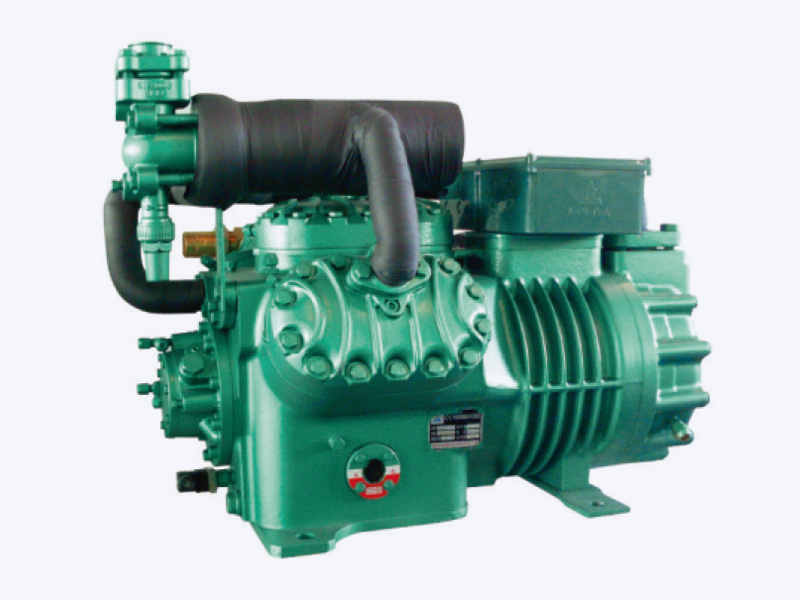The design of a semi-hermetic compressor plays a significant role in enhancing its reliability in industrial applications. Here's how:
Sealed Design: Semi-hermetic compressors are engineered with a sealed housing that encapsulates critical components such as the motor, compressor, and internal mechanisms. This sealed design acts as a barrier, effectively shielding the compressor's internal components from environmental contaminants. By preventing ingress of dust, moisture, and debris, the sealed housing minimizes the risk of component degradation, corrosion, or malfunction due to external factors. This feature is particularly crucial in industrial settings where the operating environment may be harsh or prone to contamination, ensuring consistent performance and reliability over time.
Robust Construction: The construction of semi-hermetic compressors is characterized by heavy-duty materials and robust components, meticulously engineered to withstand the demanding conditions encountered in industrial applications. High-strength casings, reinforced bearings, and precision-machined internals are integral aspects of their design. This robust construction imparts durability and resilience to the compressor, enabling it to endure extreme pressures, temperatures, and mechanical stresses commonly encountered in industrial environments. As a result, semi-hermetic compressors exhibit exceptional reliability and longevity, minimizing the need for frequent maintenance or premature replacement.
Integrated Motor: One distinguishing feature of semi-hermetic compressors is the integration of the motor within the compressor assembly, albeit with serviceability in mind. Unlike hermetic compressors, where the motor is permanently sealed within the compressor housing, semi-hermetic compressors allow for the motor to be accessed and serviced independently. This modular design facilitates ease of maintenance and repair, as the motor can be replaced or serviced without necessitating the replacement of the entire compressor unit. By enabling swift and efficient motor maintenance, this design characteristic reduces downtime and enhances the overall reliability and availability of industrial systems employing semi-hermetic compressors.
Cooling Mechanisms: Semi-hermetic compressors incorporate sophisticated cooling mechanisms designed to mitigate thermal stress and ensure optimal operating conditions. Advanced features such as liquid injection systems or internal cooling fans are integrated into the compressor design to dissipate heat generated during compression efficiently. By effectively managing thermal loads, these cooling mechanisms prevent overheating of critical components, such as motor windings and compressor valves, which can lead to premature failure. By maintaining lower operating temperatures, these cooling systems contribute to improved energy efficiency and reliability of the compressor in industrial applications.
Capacity Control: Many semi-hermetic compressors are equipped with capacity control mechanisms that allow for precise modulation of compressor output in response to varying system demands. This capacity modulation capability enables the compressor to operate at optimal efficiency across a wide range of load conditions, minimizing energy consumption and wear on internal components. By matching compressor capacity to actual refrigeration requirements, capacity control mechanisms reduce the frequency of start-stop cycles and ensure smoother operation, thereby extending the service life and enhancing the reliability of semi-hermetic compressors in industrial settings.
Oil Management System: Proper lubrication is essential for ensuring smooth operation and longevity of compressor components. Semi-hermetic compressors feature sophisticated oil management systems designed to deliver precise lubrication while minimizing oil carryover into the refrigerant circuit. These systems incorporate features such as oil separators, oil pumps, and oil reservoirs to effectively capture and return lubricating oil to the compressor sump. By maintaining optimal oil levels and quality, the oil management system prevents excessive wear on bearings, pistons, and other moving parts, thereby enhancing the reliability and durability of the compressor in industrial applications.
Semi-Hermetic Two-Stage Compressor


 English
English عربى
عربى 简体中文
简体中文












